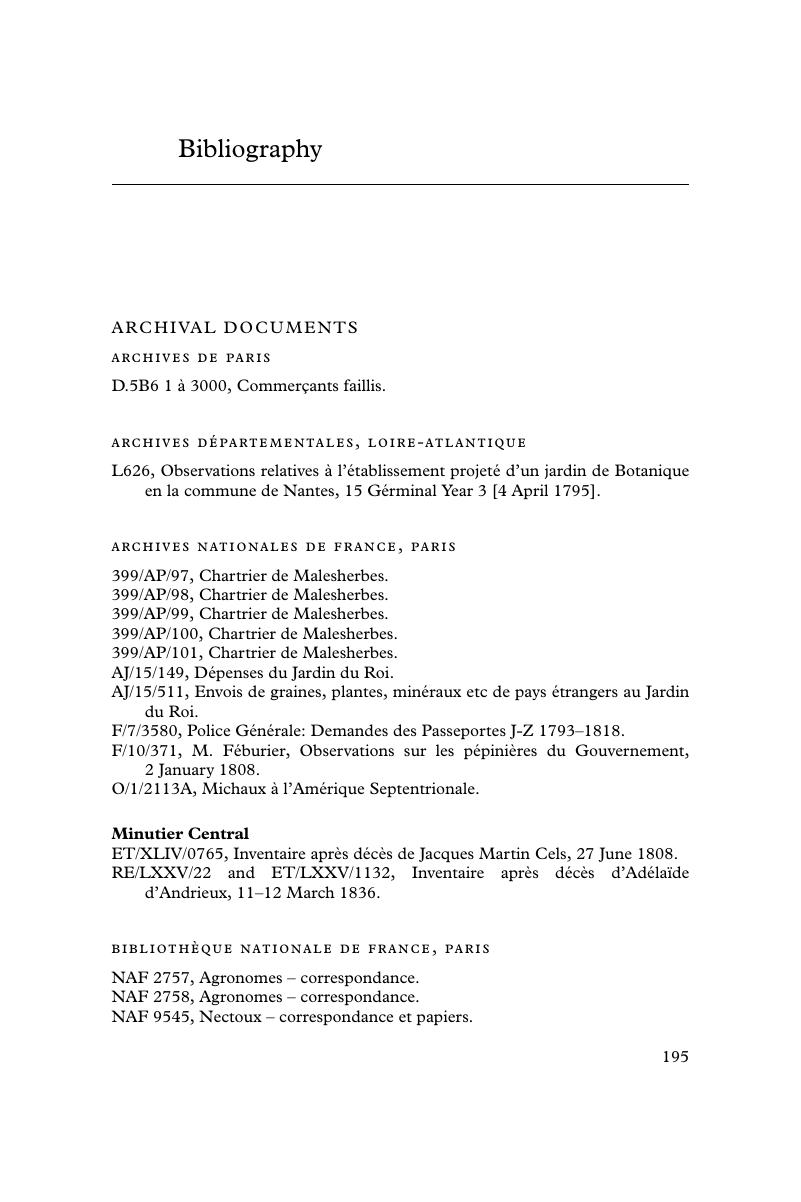Book contents
- Cultivating Commerce
- Science in History
- Cultivating Commerce
- Copyright page
- Dedication
- Contents
- Figures
- Maps
- Acknowledgements
- Note on the Text
- Abbreviations
- Introduction
- 1 Plant Traders and Expertise
- 2 Science, Commerce and Culture
- 3 Amateur Botany
- 4 Social Status and the Communication of Knowledge
- 5 Commerce and Cosmopolitanism
- 6 Cosmopolitanism under Pressure
- Conclusion
- Bibliography
- Index
- References
Bibliography
Published online by Cambridge University Press: 27 November 2017
- Cultivating Commerce
- Science in History
- Cultivating Commerce
- Copyright page
- Dedication
- Contents
- Figures
- Maps
- Acknowledgements
- Note on the Text
- Abbreviations
- Introduction
- 1 Plant Traders and Expertise
- 2 Science, Commerce and Culture
- 3 Amateur Botany
- 4 Social Status and the Communication of Knowledge
- 5 Commerce and Cosmopolitanism
- 6 Cosmopolitanism under Pressure
- Conclusion
- Bibliography
- Index
- References
Summary

- Type
- Chapter
- Information
- Cultivating CommerceCultures of Botany in Britain and France, 1760–1815, pp. 195 - 228Publisher: Cambridge University PressPrint publication year: 2017



